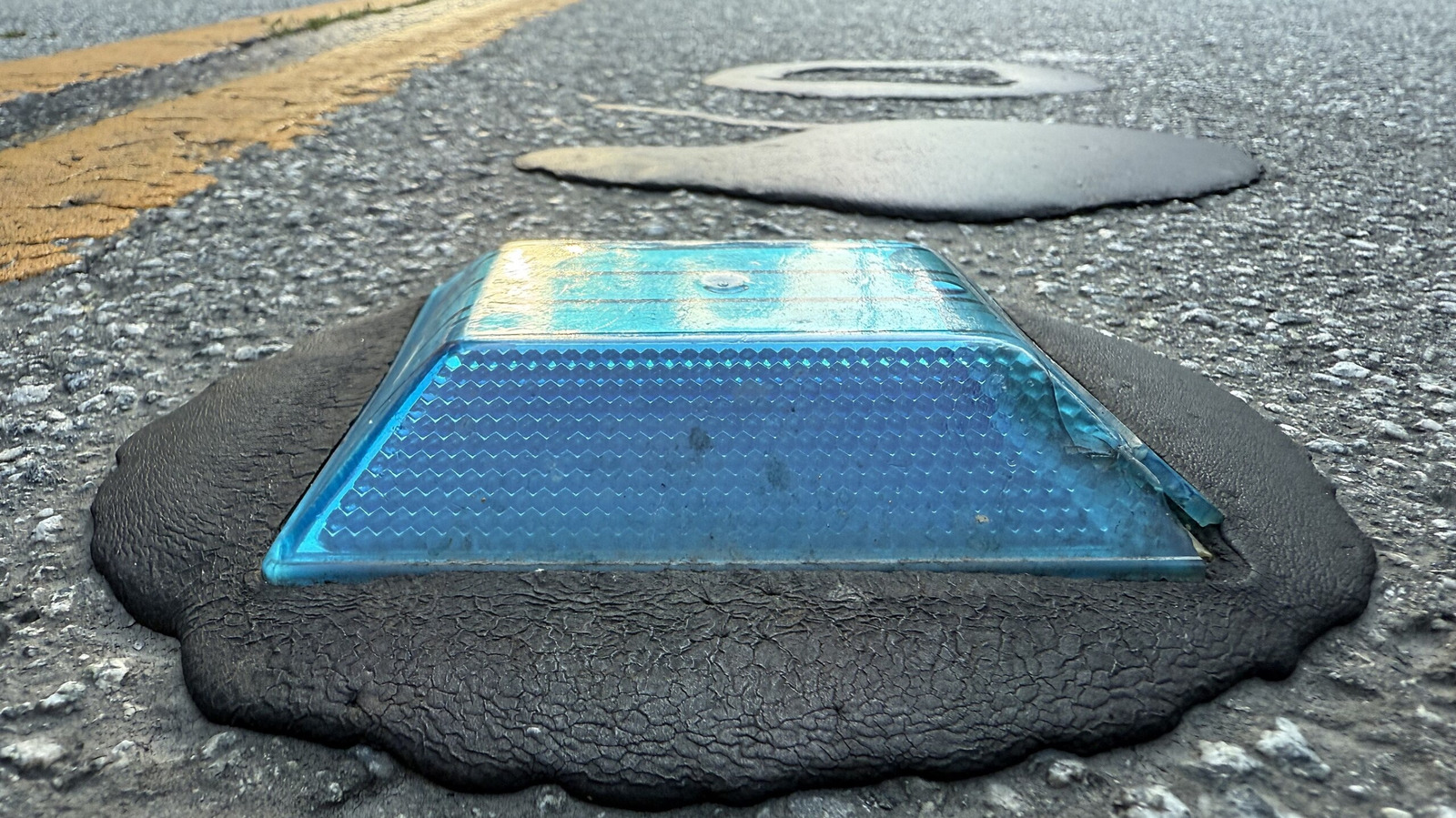Copyright SlashGear

Amidst the hustle and bustle of the drive to and from work, while trying to negotiate chaotic traffic and the latest episode of your favorite podcast, you may have either never noticed or simply just dismissed the occasional blue road reflectors that are placed on the highways and byways you travel each day. These raised pavement markers (RPMs) come in an assortment of colors. Yellow and white are by far the two most predominant, but others come in red, green, and blue, not unlike a bag of M&Ms. As one might expect, each color means something completely different, but it's the blue RPMs we want to know more about. In a nutshell, blue RPMs are the universal indicator that a fire hydrant is located nearby. Sure, we've all become accustomed to seeing squat, brightly painted fire plugs typically used more by dogs than fire departments, but paint can fade over time. In emergency situations, responding vehicles typically "run hot," meaning their lights and sirens are blaring. They may also have their headlights on, especially at night, or in foggy or smoky conditions. RPMs placed in the street will often be the only indicator for first responders, especially in rural areas, that a hydrant is close at hand. In general, blue RPMs are not legally mandated. For example, local agencies in California may place them on a State highway, but must first get an "encroachment permit" from the California Department of Transportation (Caltrans). The "Traffic Engineering Manual" for Florida's Department of Transportation (FDOT) states that local agencies need approval from the District Traffic Operations Engineer before they're installed. In both states, and generally speaking, overall for many states, blue raised pavement markers are installed six inches from the center of the pavement (regardless of whether there's a stripe or not) on the side closest to the fire hydrant. In spots such as freeways and their associated on and off ramps, where a hydrant might be placed out of view, they'll typically be located one foot off the edge and directly opposite where the hydrant is located. In New Hanover County, North Carolina, blue RPMs are installed by local fire departments. Rural counties differ from those within urbanized city limits in that hydrants can be few and far between. What's more, they might be difficult to find thanks to roadside plant overgrowth, thus making it harder for first responders to see them. Therefore, RPMs are vital in more rural areas because they may be the only indicator that a hydrant even exists. Interestingly, in climates where snow is pervasive, plows have a tendency to rip up RPMs, so you're more likely to find them in southern states where snow isn't an issue. On occasion, they might also signify emergency entrances to a firehouse. In most states, blue RPMs aren't traffic control devices but are meant solely to enhance public safety and therefore can't be used for any purpose other than assisting first responders in locating a fire hydrant, no matter what color it happens to be. Now that you know why they're there, see how many of them you notice the next time you go for a ride.



